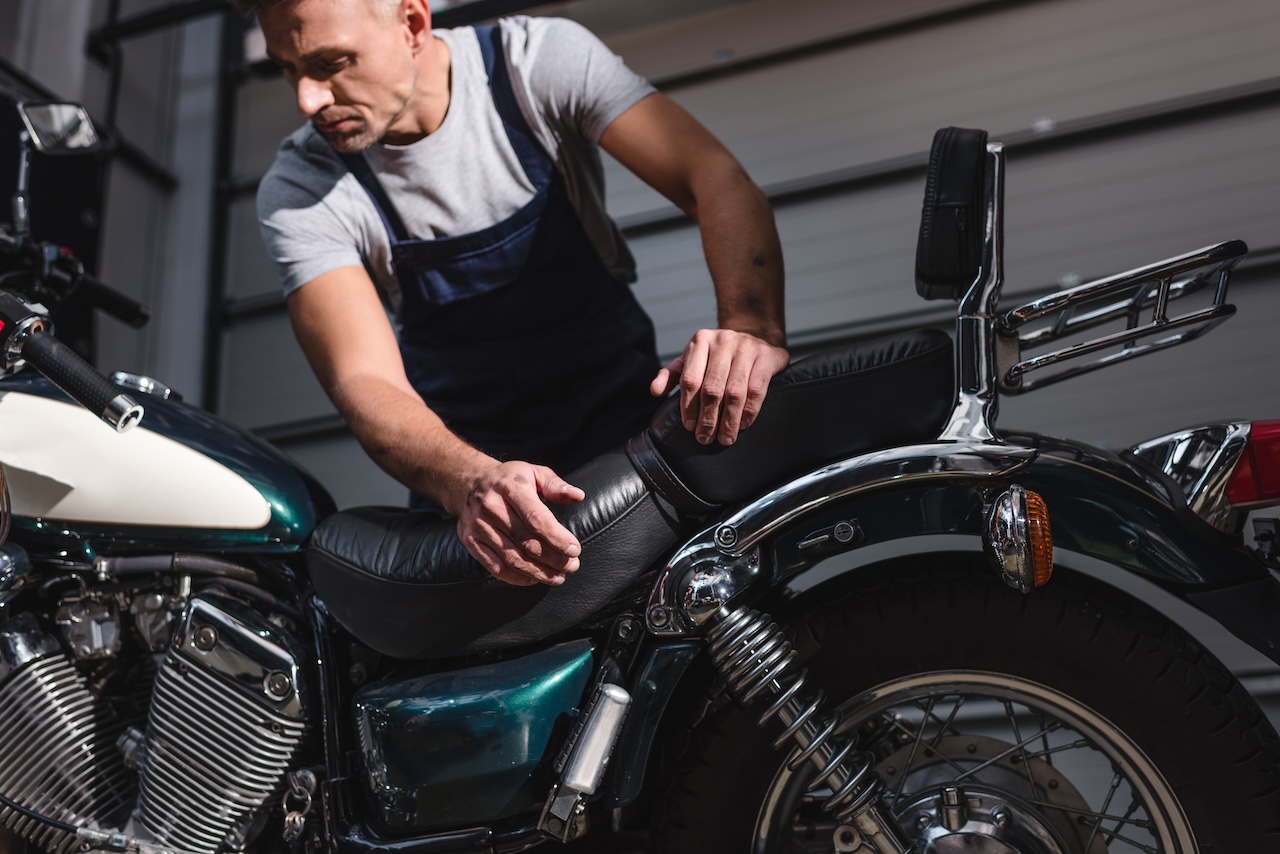The Ultimate Motorcycle Storage Checklist

For motorcycle enthusiasts, the end of the riding season can be a sad time—but it doesn't mean you should just park your bike and forget about it until the weather warms up again. Properly storing your motorcycle can make a significant difference in its condition and performance, so that you're ready to hit the road as soon as spring arrives.
This comprehensive guide will walk you through every step of motorcycle storage, from pre-storage preparation to getting your bike out on the road again.
Are There Negative Effects From the Wrong Motorcycle Storage?
Improper storage of your motorcycle can have negative effects on its overall performance and appearance. When a bike is left to sit for an extended period, various components can deteriorate or become damaged due to lack of use and exposure to the elements.
Some common negative effects of improper motorcycle storage include:
- Corrosion: When metal parts are exposed to moisture for an extended time, they can start to rust and corrode. This is especially true for motorcycles stored in garages or sheds with poor ventilation.
- Battery Drain: If your battery is not properly maintained while in storage, it can lose its charge and potentially become damaged.
- Tire Flat Spots: When a motorcycle sits on the same spot for an extended period, the weight of the bike can cause the tires to develop flat spots. This can lead to uneven tire wear and affect handling on the road.
- Fuel System Issues: If you store your motorcycle with a full tank of gas, the fuel can break down over time and potentially clog up your fuel system.
To avoid these negative effects, it's crucial to properly prepare and store your motorcycle during the off-season.
Pre-Storing Your Motorcycle
Before you wheel your motorcycle into its winter or long-term home, a little preparation can go a long way in preserving its value and performance. Here's a pre-storage checklist:
Clean and Detail the Motorcycle
A thorough cleaning is your first line of defense against elements that could corrode or tarnish your bike's surfaces. Dirt, bug residue, and even water spots can be damaging over the long-term storage duration.
Change Oil and Filter
Used oil that’s been sitting for long periods can become acidic and lead to corrosion inside the engine. Fresh oil and a new filter will help protect against this and provide a healthy start to the next season.
Check and Inflate Tires
Proper tire pressure ensures that your bike's tires will not develop flat spots from resting on the ground or lose their shape over time.
Lubricate Moving Parts
Moisture from the cold, or even slightly humid, air can rust or freeze moving parts. A light coating of lubricant on exposed rods, chains, and cables can prevent this.
Treat the Fuel System
Gasoline left in a tank for months can deteriorate, which causes it to varnish the inside of the carburetors or fuel-injected systems. Stabilizing the fuel can significantly reduce this risk.
Protect the Battery
A battery left to sit without use can lose its charge or become damaged. Either remove it for upkeep or use a battery tender to maintain its health.
Choosing the Right Motorcycle Storage Location
You'll want to balance a few factors when deciding which storage location works best for you:
Indoor vs. Outdoor Storage
Indoor storage is the best option, protection-wise. If outdoor storage is the only choice, look for a specially designed bike cover to protect against UV rays and rain.
Climate-Controlled vs. Non-Climate-Controlled
Climate-controlled storage guarantees stable indoor temperatures and humidity levels, which can prevent rust, dry rot on tires, and mildew in the seats and helmet linings.
Security Considerations
Choose a location with a minimum of secured access, and perhaps even consider using additional locks or an alarm system for added protection.
General Tips for Storing Your Motorcycle
When using motorcycle storage, you'll want to follow these five tips to keep your bike in peak condition:
Positioning and Securing the Motorcycle
Store your bike with its tires off the ground, either by using a stand specifically designed for storage or by placing it on a piece of wood under the frame. This can prevent tires from flat-spotting and the suspension from being under constant load.
Cover the Motorcycle
An often-overlooked step, using a proper motorcycle cover can keep dust, moisture, and unwanted attention away from your bike.
Connecting a Battery Tender
A battery tender, or a charger that monitors and maintains the battery, can ensure that your motorcycle starts easily when you're ready to use it again.
Draining Fluids (If Applicable)
Depending on the length of storage and the type of fluids in your motorcycle, consider draining and replacing brake fluids, coolant, and clutch fluids, as they can deteriorate over time.
Implementing Theft Prevention Measures
Sadly, inactivity can make motorcycles an attractive target for theft. Use common sense and add additional security measures to discourage potential thieves.
Regular Maintenance Checks During Storage
Don't set it and forget it. Plan to check up on your stored motorcycle at least once a month:
Monthly Inspection Routine
A brief monthly inspection will ensure that all the work you've done before storing the motorcycle is paying off.
Battery Maintenance
If using a battery tender, a quick battery check can ensure that it's maintaining its charge.
Lubrication and Rust Prevention
Reapply lubricants if necessary, and keep an eye out for any signs of rust or other corrosion.
Tire Rotation (If Applicable)
If you're storing your bike for an extended period, consider rotating the tires every month to maintain their shape.
Taking Your Motorcycle Out of Storage
Once the riding season starts, you'll want to take your bike out and hit the road. However, doing so without preparation can lead to potential safety issues and damages:
Inspecting the Motorcycle
A thorough inspection is essential to ensure that no hidden damages occurred during storage.
Performing Post-Storage Maintenance Checks
After an inspection, it's time to do a little maintenance work, such as checking the lights, changing the oil if it hasn't been done before storage, and making sure your brakes are up to par.
Test Ride and Readjustments
Take your bike out for a short spin, and then readjust mirrors, handlebars, and suspension if necessary. This will help you to identify potential issues before you have to rely on your bike for longer rides.
Keep In Mind
Whether you're a casual rider or a die-hard motorcycle enthusiast, the care you provide for your bike during the off-season will directly impact your experience when it's time to rev the engine. With proper storage, your motorcycle will be ready to hit the road as soon as you are.
Trust Hawkeye Storage With Your Motorcycle
With month-to-month leases, 24/7 access, and any storage unit you could need for your ride, Hawkeye Storage has the storage solutions you need. Our facilities are designed with security and convenience in mind, so you can have peace of mind knowing your motorcycle is safe and easily accessible when you're ready to ride again.
